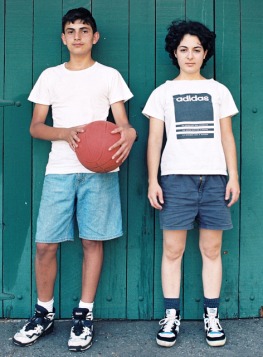I came across the work of these two photographers whilst editing my portraits and still searching for something that was missing.
Peter Zelewski
I admire the work of Zelewski a now London based portrait and documentary photographer, though formerly a graphic designer, which is evident in his work.
His work on London streets has led to his projects “The people of Soho” and “Beautiful strangers” (shot between 2014 and 2016) below and his book “People of London” (2017).




(Peter Zelewski Photography, 2017)
Zelewski talks about the importance of good lighting, interesting composition, and showing respect to those you’re photographing (Worldphoto.org, 2017), which echoes my previous research and comments on Walker Evans and some other photgraphers. These projects came from his love of the London streets and its inhabitants, and this passion shows in his work.
These works are characterised by minimalist composition, with his subject in the centre, use tight alleys, and converging lines to focus the eye n directly to their faces (LFI – Leica Fotografie International, 2017), and hence gives a consistency to his work. Interestingly he mentions how much he learnt from photographing on the streets in unfavourable conditions, “The priceless experience of meeting communication and making portraits of complete strangers often in a very short time frame” (Worldphoto.org, 2017). I find the head and shoulders hsots more powerful than the full length shots.
He values the generosity of others, which includes them agreeing to walk to preselected locations which could be 10-15 minutes away. “The people I photograph must have something interesting about them which makes them stand out from the crowd” he says (LFI – Leica Fotografie International, 2017) and spends hours searching for just one subject. When I’m shooting I often walk the streets for 6-7 hours a day searching for the right person. The 50mm lens he has used allows him to get close and talk with his subjects, enables a sharp focus on the eyes and compensates for the low light situation that he often shoots in on the streets.
Paul Matzner
Previously working in Graphics but now a photographer based in Winsconsin, he has since 2008 photographed on the streets of New York City, Chicago, and Milwaukee and has gained much recognition online. I am interested in his recent project is “Facing You/Facing Me”, a series of close ups of those he’s shot on the streets.
(Smithson, 2017)
His project statement Project Statement shows his awareness and respect for others: “We pass people on the street every day without making eye contact or even acknowledging their presence. We are connected to our music, our phones, our technology, but not necessarily to the people around us. I have chosen to share a momentary, public intimacy with those passers by so that I can gaze longer at their faces and value their humanity. We need each other in this world. Awareness of the people around me is the first step toward appreciation of who I am and who they are, whether those relationships remain anonymous, or become more revealing over time.” (Paul Matzner Photography, 2017).
Matzner likes to photograph others just being themselves and admires the street photography of Henri Cartier-Bresson and the description that has been ascribed to it “the poetry of human encounters on the street” (Paul Matzner Photography, 2017).
The portraits are arranged by the various locations and streets and each series retains the same background. What interests me is the compositions that he has chosen. They are all head shots from close up, sometimes with the top of their heads chopped off. The backgrounds are extremely blurred, and therefore contextual clues are limited. The subjects all stare right into the lens unflinchingly, with neutral expressions; I wonder how he achieved such intimacy and confidence in his subjects. The lighting conditions are similar across each series. So once again we have a consistency of approach.
My Learning points
I am looking at these projects from the standpoint of someone making portraits on the street:
- The importance of consistency in : location, background, pose/expression, crop/framing,
- The value of engagement with subjects
- The value of waiting for the right subject
- The effectiveness of a fixed lens and a very wide aperture
- The importance of respecting your subjects
- The value of learning from shooting in challenging conditions
References
LFI – Leica Fotografie International, G. (2017). Peter Zelewski – Beautiful Strangers | LFI Blog. [online] LFI. Available at: https://lfi-online.de/ceemes/en/blog/interview-peter-zelewski-784.html [Accessed 21 Nov. 2017].
Paul Matzner Photography. (2017). About. [online] Available at: http://www.paulmatzner.com/about.html [Accessed 21 Nov. 2017].
Paul Matzner Photography. (2017). FACING YOU/FACING ME. [online] Available at: http://www.paulmatzner.com/f282907006 [Accessed 21 Nov. 2017].
Peter Zelewski Photography. (2017). Beautiful Strangers. [online] Available at: http://peterzelewskiphotography.com/beautiful-strangers/8349kwbvavpbnctej1j6nn6nyjbmvu [Accessed 21 Nov. 2017].
Smithson, A. (2017). Paul Matzner: Facing You/Facing Me. [online] LENSCRATCH. Available at: http://lenscratch.com/2015/06/paul-matzner-facing-youfacing-me/ [Accessed 21 Nov. 2017].
Worldphoto.org. (2017). Interview – Peter Zelewski, theprintspace | World Photography Organisation. [online] Available at: https://www.worldphoto.org/blogs/06-07-16/interview-peter-zelewski-theprintspace [Accessed 21 Nov. 2017].



 (The Museum of Modern Art, 2017).
(The Museum of Modern Art, 2017).. Face on. London: Black Dog.Greengrassi.com. (2017). greengrassi: Jennifer Bornstein. [online] Available at: http://www.greengrassi.com/Artists?aid=3&eid=115 [Accessed 11 Nov. 2017]. Metmuseum.org. (2017). Cite a Website - Cite This For Me. [online] Available at: https://www.metmuseum.org/toah/images/hb/hb_2000.329.jpg)
 (Greengrassi.com, 2017)
(Greengrassi.com, 2017) (Mutualart.com, 2017)
(Mutualart.com, 2017)

 (Adams, 2017)
(Adams, 2017) (Tomhunter.org, 2017)
(Tomhunter.org, 2017). Cite a Website - Cite This For Me. [online] Available at: https://www.metmuseum.org/toah/images/hb/hb_2000.329.jpg)

